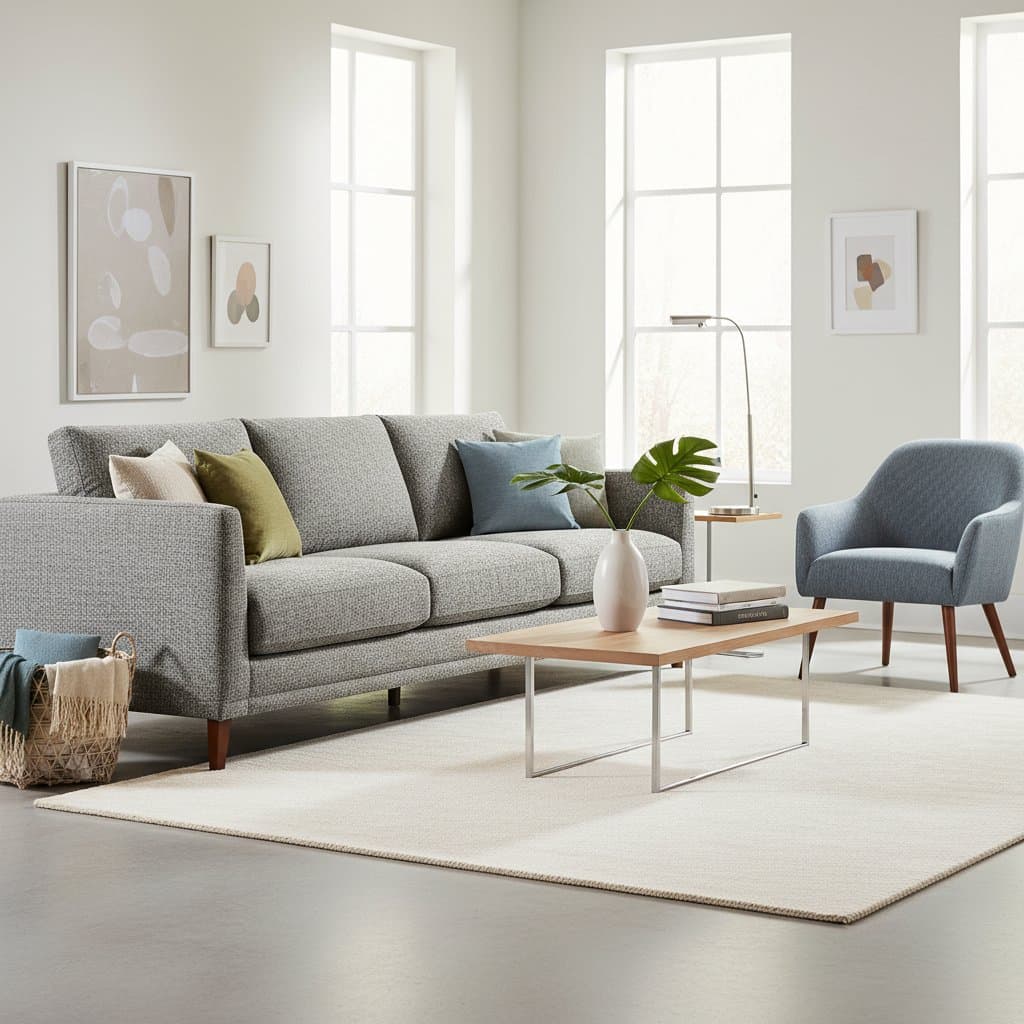Antimicrobial Fabrics: Enhancing Home Health Daily
Clean and healthy homes begin with everyday surfaces. Antimicrobial fabrics have transitioned from medical settings to residential spaces like living rooms, bedrooms, and kitchens. These materials provide protection against germs while preserving comfort and aesthetic appeal. Individuals recovering from illness, households with pets, or those seeking reduced cleaning efforts find value in these textiles, which contribute to a more effortless daily routine.
Defining Antimicrobial Fabrics
Antimicrobial fabrics incorporate treatments or fiber integrations that prevent the proliferation of microorganisms, including bacteria, fungi, and algae. Common agents include silver ions, which interfere with bacterial cell structures, or alternatives like copper, zinc, and botanical extracts that deter microbial activity. Treatments apply either as coatings on completed fabrics or directly into yarns during production, ensuring durability through washes and wear.
Polyester upholstery with silver chloride integration, for instance, maintains odor resistance over extended periods. Cotton sheets enhanced with bamboo charcoal withstand humidity without developing mustiness. Linen curtains featuring zinc finishes inhibit mildew near damp areas. Such methods deliver consistent protection, allowing more focus on enjoyment rather than hygiene concerns.
Relevance to Residential Settings
Soft furnishings in homes accumulate bacteria and allergens from moisture, skin cells, clothing, and pet dander. Sofas, curtains, rugs, and bedding retain these elements, often necessitating frequent or specialized cleaning. Antimicrobial fabrics mitigate this by limiting bacterial development between maintenance sessions.
Families with young children or allergy sufferers gain particular advantages from these materials in promoting indoor well-being. Renters may select slipcovers, shower curtains, or towels with safe antimicrobial properties for easy implementation. The aim remains practical hygiene integrated into routine living, rather than an overly sanitized atmosphere.
Primary Advantages
- Extended freshness: These fibers counteract odors from perspiration, meals, and animals.
- Reduced upkeep: Surfaces require less intensive cleaning over time.
- Enhanced longevity: Certain treatments bolster fiber resilience against humidity.
- Better indoor air: Diminished mold and mildew reduce airborne irritants.
- Added assurance: Ideal for communal areas like guest rooms or workspaces.
Practical Applications in the Home
Prioritize high-contact zones for implementation. Upholstered items, sleep linens, and bath textiles serve as effective starting points. Consider these examples:
- Living areas: Select Crypton Home upholstery for sofas, which repels stains and microbes while offering a plush texture. Opt for shades such as Snow or patterned weaves that conceal minor imperfections.
- Sleeping quarters: Choose sheets with HeiQ Pure technology, which preserve freshness in warmer environments. Combine with machine-washable duvet covers to streamline care.
- Cooking spaces: Substitute conventional dishcloths with Polygiene-treated microfiber versions that dry quickly and resist smells.
- Bathing areas: Employ mildew-resistant shower curtains or bamboo mats to avoid slick residues and odors.
- Entrance zones: Install mats with antimicrobial rubber undersides to block the entry of dirt and contaminants.
For new interiors, performance fabrics suit benches or chairs, enduring daily demands and cleaning with soap and water. Budget-conscious individuals or tenants benefit from affordable additions like pillow encasements or area rugs.
Integrating Function and Design
Practicality complements visual appeal in modern antimicrobial options. Natural compositions and contemporary motifs appear in many products, such as cotton-linen mixes with embedded protective threads that rival untreated counterparts in elegance. Pale blue silver-infused linen slipcovers evoke a serene seaside vibe, while charcoal polyester blends fit sleek, modern interiors.
Professionals emphasize this harmony. Interior designer Sofia Calder observes, “People want performance fabrics that do not look technical. A soft boucle chair that resists bacteria is still a beautiful chair.” This evolution underscores how wellness enhances rather than compromises design.
Safety and Environmental Considerations
Concerns about treatment safety prompt careful selection. Established brands employ bound additives that adhere to fibers without leaching during laundering. Seek OEKO-TEX Standard 100 or GREENGUARD Gold certifications to confirm compliance with health and ecological benchmarks. Steer clear of products asserting indefinite protection without disclosing components.
Environmental impact influences choices as well. Producers incorporate recycled materials with natural antimicrobial agents to minimize synthetic use. Some repurpose silver from discarded electronics for yarns. Prioritize durable items that extend service life, promoting sustainability through reduced consumption.
Maintenance Guidelines
Routine care sustains both fabric integrity and protective qualities. Adhere to these practices:
-
Vacuum weekly using a soft-bristle tool to eliminate particles.
-
Address spills promptly with diluted soap and lukewarm water; reserve bleach for manufacturer-approved cases.
-
Allow full air drying post-wash to avert dampness.
-
Alternate cushion positions and linens for uniform aging.
-
Eschew abrasive chemicals that compromise treatments.
Washable elements like slipcovers benefit from periodic laundering based on usage frequency. Protective features delay microbial issues, yet consistent attention ensures optimal condition.
Accessible Introduction Strategies
Incorporate these fabrics without major overhauls:
-
Initiate modestly: Update towels, curtains, or pillow cores with treated alternatives.
-
Employ layers: Position antimicrobial protectors beneath standard bedding.
-
Apply treatments: Use compatible sprays on contact-heavy areas like seat cushions.
-
Explore resale: Source pre-owned items from lines such as Sunbrella or InsideOut, where properties persist.
Such approaches enable evaluation of benefits prior to broader adoption.
Observed Outcomes
Users report tangible improvements after adoption. A couple in an urban apartment upgraded to an antimicrobial sofa following pet adoption. “We used to wash the cushions constantly,” they shared. “Now it smells clean even after a week of rain.” A parent described her children’s rug retaining no lingering juice odors, easing upkeep.
Sustaining Health Through Fabric Selection
Antimicrobial fabrics extend beyond defense to foster serene habitation. When furnishings maintain cleanliness longer, household management simplifies, redirecting energy toward meaningful pursuits.
Align choices with personal taste by selecting pleasing hues and feels. Accent resilient bases with custom pillows or vintage accents for individuality. These elements craft nurturing spaces that blend vitality with character.
Accessible to all, antimicrobial fabrics elevate living without excess.
